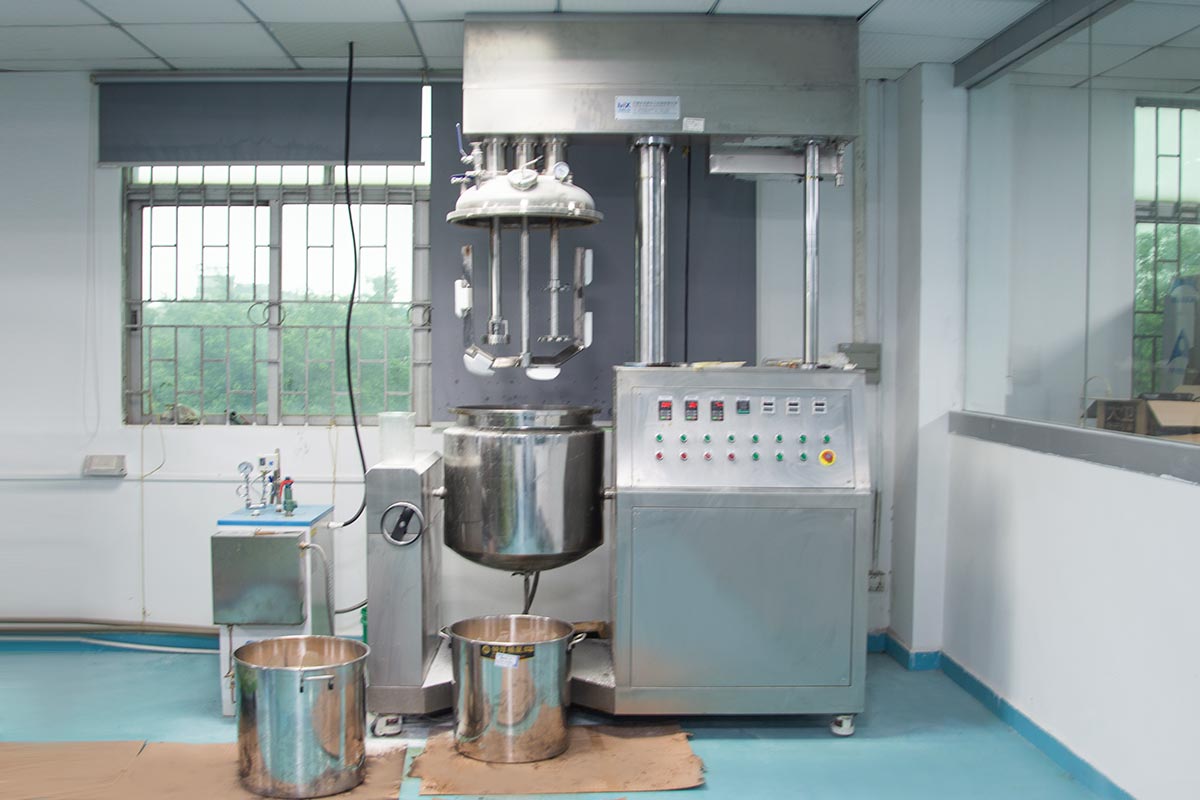
After the materials are heated and stirred in the water pot and oil pot, they are sucked into the emulsifying pot by vacuum pump. Through the central stirring in the upper part of the emulsifying pot, the polytetrafluoroethylene scraper always caters to the shape of the mixing pot, sweeps away the sticky materials on the wall, so as to continuously produce a new boundary for the included materials. Then, through the cutting, compression and folding of the blades and rotary blades, they are stirred After mixing, the material flows down to the homogenizer under the pot body, and then through the strong cutting, impact, turbulent flow and other processes between the high-speed rotating cutting wheel and the fixed cutting sleeve, the material is cut in the shear seam, and quickly broken into 200nm-2um particles. Due to the vacuum state in the emulsifying pot, the bubbles generated in the mixing process of the material are timely removed.
In the manufacturing process of high viscosity emulsions, especially creams, ointments and emulsions, the most common problems are the large particle size of the dispersed phase and the mixing of air into the products when stirring. The large particle size leads to the instability and lack of luster of the emulsion; If air is mixed into the product, it will cause bubbles, bacterial pollution, easy oxidation and unsmooth appearance. In view of the two major problems, the vacuum homogenization emulsification unit is composed of homogenization agitator, central blade agitator and scraping wall agitator. Their respective characteristics complement each oth
- 上一篇:reflow oven
- 下一篇:Grinder


